What is Oxycodone?
Oxycodone is used to relieve pain severe enough to require opioid treatment and when other pain medicines did not work well enough or cannot be tolerated. It belongs to the group of medicines called opioid analgesics (pain medicines). Oxycodone acts on the central nervous system (CNS) to relieve pain.
Oxycodone extended-release capsules or tablets should not be used if you need pain medicine for just a short time, such as when recovering from surgery. Do not use this medicine to relieve mild pain, or in situations when non-opioid medication is effective. This medicine should not be used to treat pain that you only have once in a while or “as needed”.
When oxycodone is used for a long time, it may become habit-forming, causing mental or physical dependence. However, under the close supervision of healthcare providers, people who have continuing pain should not let the fear of dependence keep them from using opioids to relieve their pain. Mental dependence (addiction) is less likely to occur when opioids are used for this purpose. Physical dependence may lead to withdrawal symptoms if treatment is stopped suddenly. However, severe withdrawal symptoms can usually be prevented by gradually reducing the dose over a period of time before treatment is stopped completely.
Chemical Composition
Oxycodone’s chemical formula is C18H21NO4, and it is classified as a narcotic analgesic. As with other opioids, oxycodone acts on the central nervous system, binding to opioid receptors in the brain and spinal cord to block pain signals. However, its potency can vary depending on the dose, the formulation, and the method of administration.
Medical Uses of Oxycodone
Pain Management
Oxycodone is primarily used for the relief of moderate to severe pain. Doctors often prescribe it when non-opioid pain medications are ineffective. It is effective for both acute pain, such as the pain experienced after surgery, and chronic pain that is associated with conditions like arthritis, fibromyalgia, or severe injury.
Post-Surgical and Injury Recovery
After surgeries or major injuries, oxycodone can provide critical pain relief to help individuals recover and regain mobility. Due to its strong effects, oxycodone is often used in a controlled, short-term manner to avoid the risk of dependence and overdose.
How Does Oxycodone Work?
Mechanism of Action
Oxycodone works by binding to the opioid receptors in the brain and spinal cord. These receptors are part of the body’s natural pain control system, and when oxycodone binds to them, it inhibits pain signals from traveling to the brain. This results in a decrease in the perception of pain and an overall feeling of relief and euphoria.
Duration of Effectiveness
The effectiveness of oxycodone depends on the formulation and dose. Immediate-release formulations of oxycodone may provide pain relief within 15 to 30 minutes, lasting for approximately 4 to 6 hours. Extended-release versions are designed to release oxycodone over a longer period, offering pain relief for up to 12 hours.
Dosage and Administration
Forms of Oxycodone
Oxycodone is available in several different forms, including:
- Immediate-release tablets: For fast relief of pain.
- Extended-release tablets or capsules: Designed for long-lasting pain relief.
- Liquid form: Often prescribed to those who cannot take pills.
- Combination products: These contain oxycodone combined with other pain relievers like acetaminophen.
Proper Dosage Guidelines
Dosage varies depending on the individual’s age, medical condition, and previous use of opioids. It is important to follow the doctor’s instructions carefully to avoid complications. Typically, the initial dose for an adult is between 5 and 15 mg every 4 to 6 hours, depending on the form of oxycodone being used. The dosage may be adjusted as needed to achieve optimal pain control.
Before Using
In deciding to use a medicine, the risks of taking the medicine must be weighed against the good it will do. This is a decision you and your doctor will make. For this medicine, the following should be considered:
Allergies
Tell your doctor if you have ever had any unusual or allergic reaction to this medicine or any other medicines. Also tell your health care professional if you have any other types of allergies, such as to foods, dyes, preservatives, or animals. For non-prescription products, read the label or package ingredients carefully.
Pediatric
Appropriate studies have not been performed on the relationship of age to the effects of Oxaydo®, Roxicodone®, Roxybond™, and Xtampza® ER in the pediatric population. Safety and efficacy have not been established.
Appropriate studies performed to date have not demonstrated pediatric-specific problems that would limit the usefulness of Oxycontin® in children. However, safety and efficacy have not been established in children younger than 11 years of age.
Geriatric
Appropriate studies performed to date have not demonstrated geriatric-specific problems that would limit the usefulness of oxycodone in the elderly. However, elderly patients are more likely to have age-related liver, kidney, heart, or lung problems, which may require caution and an adjustment in the dose for patients receiving oxycodone in order to avoid potentially serious side effects.
Breastfeeding
There are no adequate studies in women for determining infant risk when using this medication during breastfeeding. Weigh the potential benefits against the potential risks before taking this medication while breastfeeding.
Risks and Precautions
Risk of Addiction
One of the most significant risks of oxycodone use is the potential for addiction. Due to its euphoric effects, patients may misuse oxycodone by taking it in higher doses or in ways not prescribed, such as crushing or snorting it. Over time, the body can become dependent on the drug, leading to tolerance and withdrawal symptoms when the drug is stopped.
Overdose and Emergency Care
An overdose of oxycodone can be fatal. Symptoms of overdose include:
- Slow or difficult breathing
- Extreme drowsiness or inability to stay awake
- Cold, clammy skin
- Constricted pupils
- Loss of consciousness
If you suspect an overdose, it is crucial to seek emergency medical help immediately. Naloxone (Narcan) is an opioid antagonist that can reverse the effects of an overdose if administered promptly.
Special Considerations
Oxycodone should be used with caution in patients with a history of substance abuse, breathing disorders, liver or kidney disease, or those who are elderly. Pregnant women should also avoid oxycodone unless absolutely necessary, as it can cause harm to the fetus.
Legal Status and Regulations
Oxycodone in the USA
In the United States, oxycodone is classified as a Schedule II controlled substance, meaning it has a high potential for abuse and addiction but is available by prescription. Due to the opioid crisis in the country, oxycodone and other opioids are tightly regulated, and physicians must follow strict guidelines when prescribing these medications.
Oxycodone in Australia
Oxycodone is also a controlled substance in Australia, classified under Schedule 8 of the Poisons Standard. It is available by prescription for the management of moderate to severe pain, but its use is subject to strict monitoring by healthcare professionals to prevent misuse and addiction.
Oxycodone in Europe and the UK
In Europe and the UK, oxycodone is similarly regulated as a controlled substance. It is available for prescription purposes and is subject to strict laws to ensure it is used responsibly. For example, in the UK, oxycodone is classified as a Class A drug under the Misuse of Drugs Act 1971.
How to Buy Oxycodone
Buy Oxycodone in the USA
If you are looking to buy oxycodone in the USA, it is important to consult a licensed healthcare provider first. Oxycodone is legally available only with a prescription from a medical professional, and purchasing it without a prescription is illegal. In some cases, patients may be able to buy oxycodone online through licensed pharmacies, but this should only be done through a legitimate provider to avoid counterfeit or unsafe products.
Buy Oxycodone in Australia
In Australia, you must obtain a prescription from a doctor before you can buy oxycodone in Australia. Buying oxycodone online is only possible through a registered pharmacy, and the medications will be delivered after verifying the prescription. Always ensure the website is accredited by the Australian government.
Buy Oxycodone Online
If you’re looking to buy oxycodone online, it is essential to ensure that the online pharmacy is legitimate and operating within the laws of your country. Many illicit online markets offer oxycodone, but these should be avoided due to the risk of counterfeit or dangerous substances.
Buy Oxycodone in Europe
In many European countries, oxycodone is available by prescription. To buy oxycodone in Europe, you need a valid prescription from a healthcare provider. Online pharmacies in Europe will only ship oxycodone to customers who meet the necessary medical requirements.
Buy Oxycodone in the UK
In the UK, you can only legally buy oxycodone in the UK with a prescription. Some online pharmacies in the UK offer the option to purchase oxycodone once a valid prescription is provided, ensuring that the process is regulated.
Alternatives to Oxycodone
Non-Opioid Pain Management
Due to the risks associated with oxycodone, many individuals are seeking non-opioid alternatives for pain relief. These may include medications like acetaminophen (Tylenol), non-steroidal anti-inflammatory drugs (NSAIDs), and physical therapies. For certain chronic conditions, alternative approaches like cognitive-behavioral therapy (CBT) and acupuncture are also gaining popularity.
Other Prescription Opioids
Other opioids, such as hydrocodone, morphine, and tramadol, are also used for pain management. Each has its own risk profile and effectiveness, and the choice between them depends on the patient’s condition and medical history.
Conclusion
Oxycodone remains one of the most widely prescribed opioids for pain relief, but it is also associated with significant risks, particularly when misused. It is crucial to follow a doctor’s guidance closely to minimize the chances of addiction and overdose. For those who need it, oxycodone can be an effective treatment, but patients must be aware of its potential side effects and the regulatory measures surrounding its purchase.
| Oxycodone | 5mg/100Caps, 5mg/5mL-500 milliliters, 5mg/100Tabs, 10mg/100Tabs, 15mg/100Tabs, 20mg/100Tabs, 30mg/100Tabs |
|---|
Be the first to review “oxycodone” Cancel reply
Related products
Pharmacy Medicines
Pharmacy Medicines
Pharmacy Medicines
Pharmacy Medicines
Pharmacy Medicines
Pharmacy Medicines
Pharmacy Medicines
Pharmacy Medicines

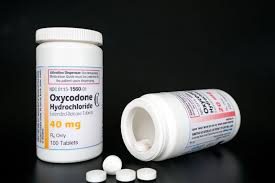


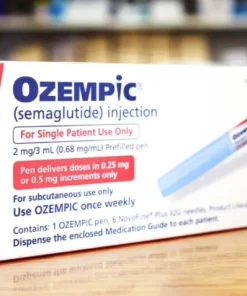
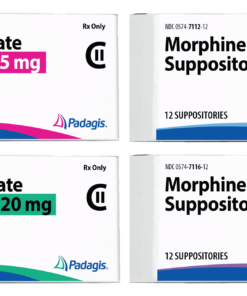
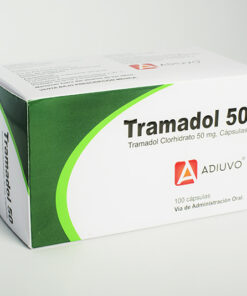
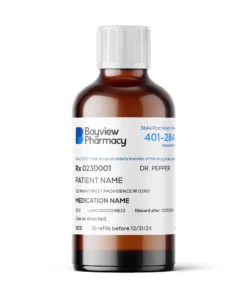
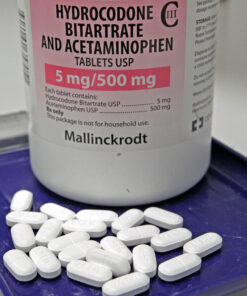
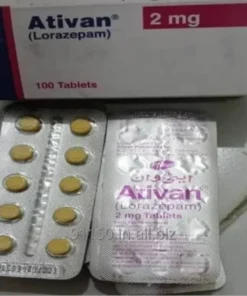
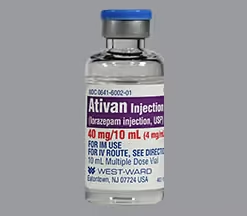
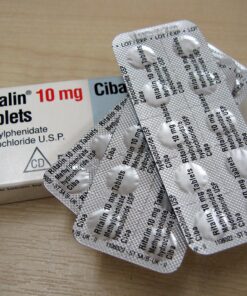
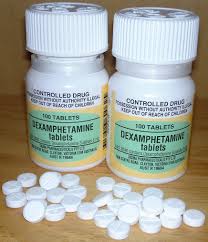

Reviews
There are no reviews yet.